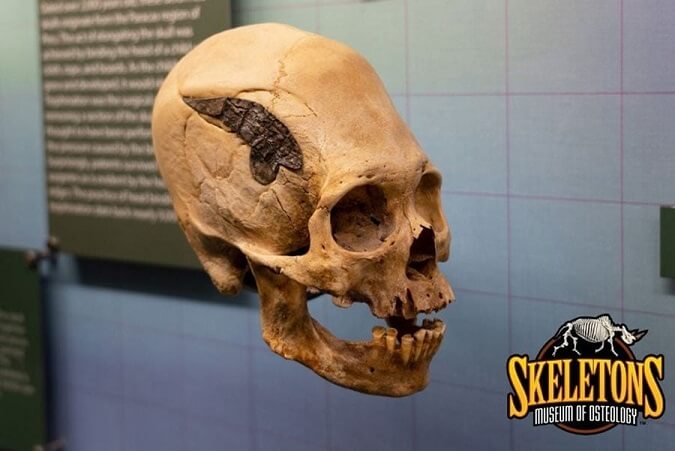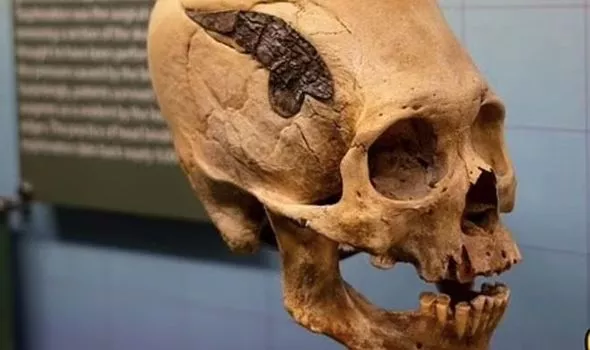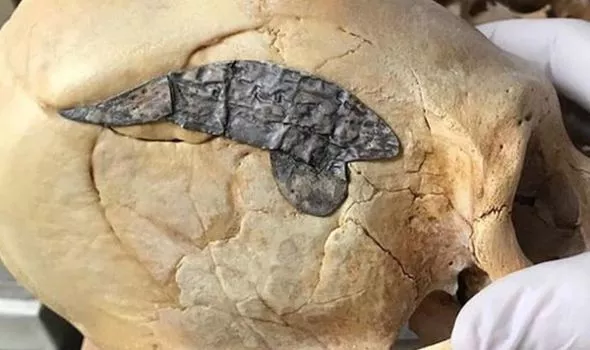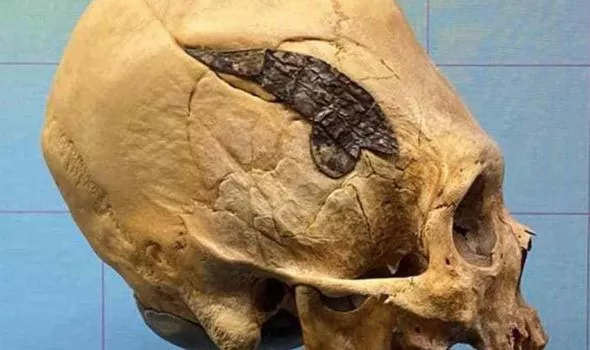
Archaeologists Stunned As 2,000 Year Old Skull Bound By Metal Evidence of Ancient Surgery
ARCHAEOLOGISTS are stunned by the 2,000-year-old skull of a Peruvian warrior bound by metal which is one of the earliest examples of ancient surgery.
By: Jacob Paul | EXPRESS
The elongated skull fused together with metal is currently held by the SKELETONS: Museum of Osteology in Oklahoma, USA. The museum hailed the discovery as one of its “most interesting” pieces. The skull is believed to have come from a Peruvian warrior and that it had been damaged in battle around 200 years ago. It is thought that Peruvian surgeons conducted a miraculous surgery on the warriors’ skull when he returned from battle seriously injured.
The museum said on Facebook that the elongation of its structure was “achieved through head binding beginning at a very young age”.
This is a practice that showed social status.
Ancient Peruvian surgeons are thought to have implanted a piece of metal to repair the fractured skull.
The museum said the material used was “not poured as molten metal” with the plate “used to help bind the broken bones”.
The exact composition of the alloy is unknown.


The museum said: “The material used was not poured as molten metal.
“We do not know the composition of the alloy. The plate was used to help bind the broken bones.
“Although we can’t guarantee anesthesia was used, we do know many natural remedies existed for surgical procedures during this time period.”
Experts say the procedure done on the skull proves that ancient peoples were capable of performing complex surgery and medical procedures.
The museum posted: “We don’t have a ton of background on this piece, but we do know he survived the procedure.

“Based on the broken bone surrounding the repair, you can see that it’s tightly fused together. It was a successful surgery.”
The skull had been in the museum’s private collection.
But after soaring of public interest in the artefact, it was later put on display in 2020.
A spokesperson for the SKELETONS: Museum of Osteology told the Daily Star: “Traditionally, silver and gold was used for this type of procedure.”
The area where the skull was unearthed in Peru has long been known for surgeons who came up with a series of complex procedures to treat a fractured skull.


The injury seen to this skull was fairly common at the time,
This is due to the use of projectiles like slingshots during battle.
Elongated Skulls were also common in Peru at the time.
They were stretched by applying force to a person’s cranium, usually by binding it between two pieces of wood.
Physical anthropologist John Verano of Tulane University told National Geographic in 2016: “They (ancient Peruvian surgeons) learned early on that this was a treatment that could save lives.
“We have overwhelming evidence that trepanation was not done to increase consciousness or as a purely ritual activity but is linked to patients with severe head injury, [especially] skull fracture.”
Now That’s Interesting
Elongated skulls have been found in ancient burial grounds around the world. Many are the result of a practice of intentionally deforming the skull with binding applied during the early years of a child’s life. Some may be explained by natural deformity. Yet enough mystery is left in relation to some of the skulls for various theories to arise.
* * *
READ MORE: DNA Tests Reveal That Paracas Skulls Are Not Human
Read more on Elongated Skulls: Malta’s Secret Elongated Skulls Are Not Humans: Ancient Alien Heads?
Telegram: Stay connected and get the latest updates by following us on Telegram!
We’d love to hear from you! If you have a comment about this article or if you have a tip for a future Collective Spark Story please let us know below in the comment section.
